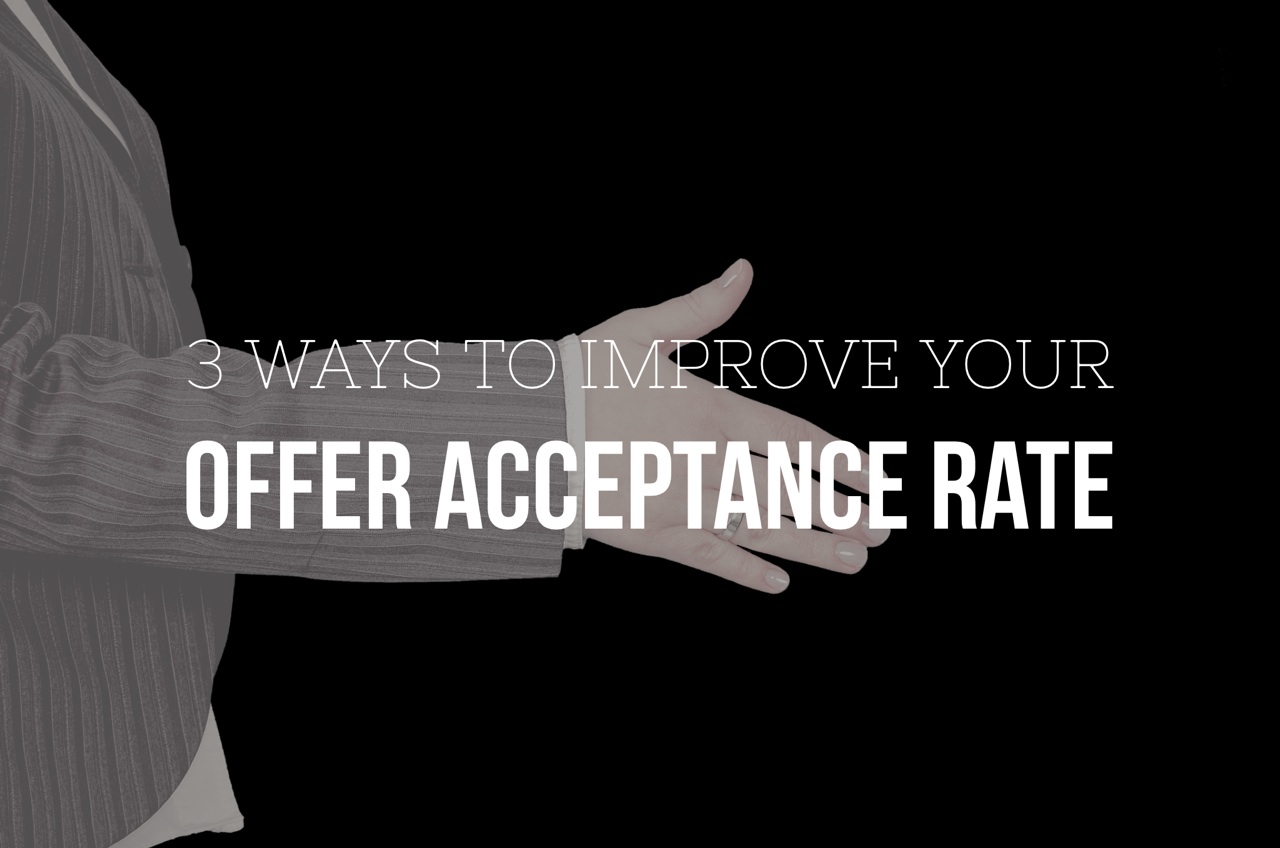Newly created positions account for 51% of their job orders – and more jobs equate to more competition for talent. Candidates have more choices about where to work, and rejected job offers are rising as a result.
When time to fill is already at an all-time high (DHI Hiring Indicators found that the average time to fill in May was 27.8 days), companies need to focus on improving their offer acceptance rates so they don’t get rejected and have to start their search over from scratch.
How to improve your offer acceptance rate:
- Sell the candidate on your opportunity: Sell the benefits of working at your company throughout your employer branding materials and job descriptions, and during the interview process. Explore your candidate’s motivations for considering your opportunity early on, and revisit them throughout the recruitment process to prove that your opportunity is the best choice for them.
Counteroffers are common – 62% of companies make them and 12% of recruiters said their last offer rejection was due to one – but selling your candidate on your opportunity, and the reasons it’s better than their current job, can help you avoid them.
- Move quickly: 63% of job offers happen within 4 weeks of the first interview. If your company takes longer than that to extend an offer, you may be missing out on candidates. The primary cause of an offer rejection is that the candidate accepted another offer (37% of candidates rejected offers for this reason).
Speed up your hiring process by reducing the number of interviews each candidate has (47% of job offers come after 3 interviews), and the time in between them. Also be sure to ask your candidates if they are interviewing elsewhere, and where they are in the process, so you can speed things up more if need be.
- Offer a competitive package: 47% of recruiters said that the biggest obstacle to hiring is that employers are not offering competitive salaries. This can be an issue early in the recruitment process because candidates won’t even consider your opportunity if you’re offering a low salary.
This can also be an issue at the offer stage – 25% of offers are rejected because the salary and benefits package was lower than expected. On average, candidates receive a 3% compensation boost each year if they stay at their current job, and a 9% boost when they change companies. Employers can remain competitive by reviewing their compensation policy on a regular basis, and offering candidates more than they make in their current role.
Employers working with direct hire agencies may find it easier to improve their offer acceptance rate. By acting as an intermediary between you and your candidates, they can help you sell your opportunity, keep your interview process moving and offer a competitive package.
They keep a pulse on the labor market, your industry, and the type of candidate you want to hire, helping you stay competitive.
They may also have a better relationship with your candidates, allowing them to uncover motivations and pending offers that they wouldn’t mention to anyone at your company.
And, at the end of the day, they are incentivized to help you hire your top choice candidates – so they’ll go the extra mile to help you find and close the best possible candidate.
